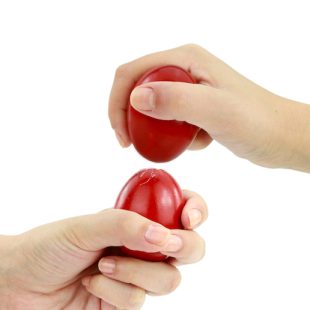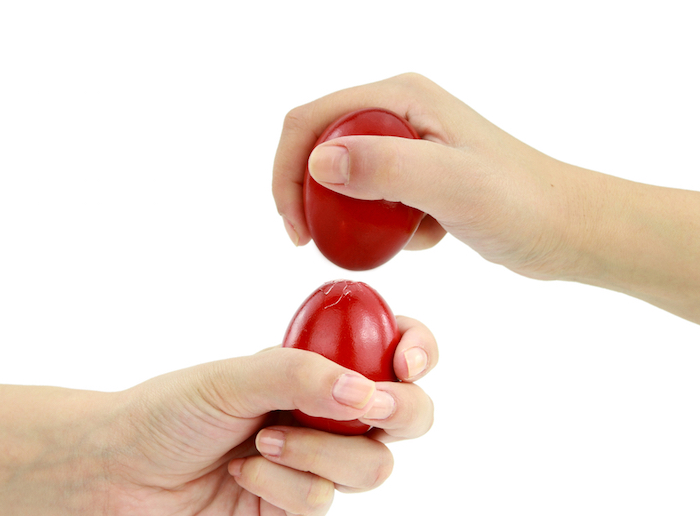
Easter on Kefalonia
If you want to know how to really celebrate Easter, go to Kefalonia. It is possibly one of the most significant periods in their annual calendar. Every year Easter is observed with copious amounts of tradition, passion, reverence, and eventual jubilant festivities.
This year the date for Easter Sunday falls on 1st May 2016.

Food or Fast
It all starts one month before Lent (Sarakosti). This period is called Apokreas or Karnavali (meat-goodbye) and culminates in what is aptly named Clean Monday.
It all gets a bit complicated, but the second week of Apokreas is Meat Week, the third is Cheese Week, and they even have a special cheese eating Sunday. However from the start of Cheese Week Christians refrain from eating meat and seafood with a spine. It is interesting that consumption of alcohol is only supposedly reduced and not banned.
To finish off the food theme, we now come to Easter Week. Easter Thursday is boil an egg day, long regarded as a symbol of life and Christ’s resurrection, and to ward off ill luck in the coming year.
On Easter Thursday tsoureki is baked. This is a type of braided and twisted sweet bread, also decorated with eggs. Simple foods such as tahinosoupa, or bean soup, are consumed on Good Friday. Mayiritsa soup is prepared on Easter Saturday, from the cuts and intestines of the coming Sunday lamb feast, which is the huge celebration where all fasts are broken. Family and friends gather together for banquets of whole roasted lamb and goat, knocking red eggs together (a bit like conkers) to see who will be lucky that year, and a festive mood that lasts until at least the early hours.
Celebration and Tradition
During the initial Apokreas period, all ages take part in what is called Maskerathes, dressing up in all sorts of outlandish costumes, and visiting friends and neighbours and gathering in taverns to laugh at each other. The final processions often take the theme of lampooning well-known characters in politics or on TV.
On Clean Monday the children make paper figures with seven legs, based on Kyria Sarakosti (Lady Lent). Each day on the build up to Easter they pull a leg off.
Good Friday is the day of mourning; women and girls visit the churches to decorate the Epitaphion with flower petals. A cloth depicting the Body of Christ is also laid out. This is later carried in a candle–lit procession through the parish to sanctify the area.
Just before midnight on Easter Saturday, it will be silent, and the church will have a solitary candle burning. Everyone will wait for the priest to announce ‘Christos Anesti’ (‘Christ is Risen’). Then everything erupts, the island shakes to the sound of bells, fireworks and much celebration in all the villages. Everyone wants to light their candle, labatha, from the one holy flame, so they can take it home and use the smoke to anoint their front doors for good luck.
In many western countries, traditions have tended to become consumer oriented, and have often lost their original meanings. But it is good to see here in Kefalonia, that they have a firm belief in the unbroken run of emotions that flow through all of the different aspects of Easter.
Find out more about Vintage Travel’s villas in Kefalonia here: https://www.vintagetravel.co.uk/villas-in-kefalonia


